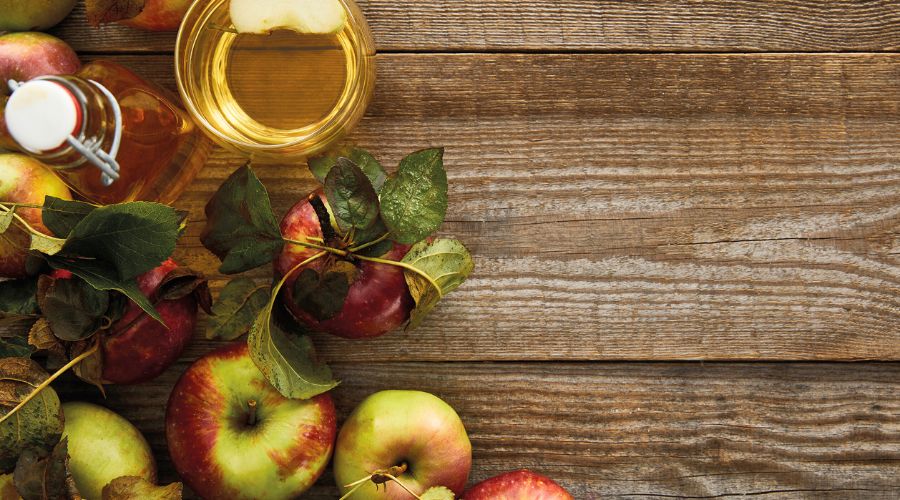The importance of protecting Great British cider
24th August 2024
National Association of Cider Makers CEO, Fenella Tyler, highlights the importance of protecting the British cider industry.

Cider apples, unsurprisingly, are grown specifically for making cider. There are more than 250 varieties grown in the UK and they all have in common features that leave them with only one use: Cider.
Cider apples and cider making are part of Great British culture dating back centuries. The Romans brought apples for alcohol with them 2,000 years ago and cider making was a part of the culture inherited from the Norman invasion over 900 years ago.
This is one of our oldest drinks and whilst cider making as an industry has evolved over time, the skill of the cider maker still relies on the traditions developed over centuries.
The cider market in the UK is relatively small. It represents between 5–10% of all alcohol consumed at any point in time, with beer, wines and spirits taking the majority of market share. However, when viewed globally, the UK cider market accounts for more than 30% of global cider consumption.
Facing challenges

One major challenge faced by cider makers is scale, as a typical cider maker needs significant space to operate.
Growing from a small or medium sized business can be challenging when there is a need to access large acreage of apple orchards, space for milling apples, vats to ferment the juice and then mature the cider over time.
With a crop that typically harvests over a 12-week period in the autumn, the juice and fermented cider must be stored for use over the next 12 months.
Orchards require long term planning. A cider apple orchard will take around seven years from planting to reach break-even, and nine years to reach full maturity. The trees will then continue cropping well for more than 30 years.
Cider makers therefore offer long-term contracts to encourage farmers to plant orchards, without any guarantee that the market will be buoyant by the time the trees mature.
As an example, trees planted in 2002/2003 as the market started to grow, reached maturity just as the market stalled in 2010.
Defra records around 15,500 acres of cider apple trees grown in the UK, and the majority of these are to be found in the west and south-west of England. This is a regionally significant crop, but slides down the government priority list when compared to commercially grown crops of national scale.
After Brexit it was hoped that support for farmers would be broadened to include cider apples as a uniquely British approach to cider making and apple growing.
Protecting these orchards through a long-term approach to agricultural support is essential for cider making, to ensure that trees thrive during the highs and lows of the cider market.
Impact of duty rates
Excise duty rates are a major catalyst in terms of market success. When duty rates increase, the cider market tends to decline, but a positive approach to excise duty by the government can be the catalyst for market growth.
With a new government just in place, cider makers and cider apple growers will be looking for positive signs that the government supports this important British industry.
A fair legislative platform for cider can be the springboard for market growth both in the UK and for export, supporting an industry steeped in heritage, and an essential part of the rural economy.
Cider makers and orchards in counties such as Herefordshire, Somerset and Devon bring so much to their local areas. More than 11,500 jobs are created through cider making and the cider market has a category value of over £3 billion.
Blossom time and harvesting attract large numbers of tourists, with more than a million people visiting cider makers and orchards across the regions.
Orchards are a haven for biodiversity, and after the introduction of best orchard practice for cider apple orchards 25 years ago, the increase in natural features such as ponds, hedgerow and wider margins mean that these orchards support large numbers of pollinating species, birds, amphibians and mammals.
Cider makers have invested in sustainable solutions for many areas of their operations,
with examples including reed bed effluent plants and waste-water recycling. Looking to
the future, many see opportunities around renewables as large site footprints open up opportunities for solar.
Celebrating heritage
As a centuries-old drink, cider should be celebrated as a great example of British heritage that is recognised and applauded around the world. The importance to rural economies, especially in traditional cider making counties, should be appreciated.
Cider making and cider apple growing is a partnership between producers and farmers that is unique to Great Britain and must be protected.
With a new government, the time is right for cider to be reevaluated and the support it needs put in place for future generations of cider makers, growers and of course, cider drinkers.
